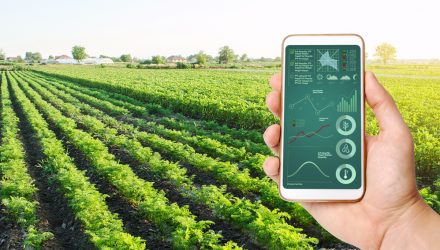Up nearly 11% year-to-date, the VanEck Vectors Agribusiness ETF (MOO) is turning heads, particularly as broader equity benchmarks notch negative performances.
Much of MOO’s strong 2022 is showing is attributed to agribusiness equities strutting their stuff against an inflationary backdrop and fertilizer producers getting a lift from crimped supplies — a scenario amplified by Russia’s war against Ukraine.
However, those aren’t permanent catalysts. Eventually, inflation will ease and geopolitical tensions will ebb. That doesn’t mean investors need to be scheduling sell dates for MOO. In fact, some compelling long-term factors remain in place.
“We believe long-term prospects for agribusiness are also promising. One of the compelling trends underpinning the outlook is global population growth, which may push up demand for agricultural products,” according to VanEck research. “Population is expected to grow from 7.8 billion to nearly 10 billion by 2050. Food production must increase by 70% by 2035 to feed a growing population and an expanding global middle class.”
In other words, investors currently engaged with MOO or those considering getting involved with the exchange traded fund may be best served by not applying short-term thinking. Indeed, the data confirms that’s easier said than done.
“Russia is the top three global supplier of energy, base metals, precious metals, bulk metals, fertilizers, and soft commodities. Specifically for agriculture, Russia is the top second and third supplier for barley and wheat, respectively,” adds VanEck.
Despite Russia’s status as a major commodities player and Ukraine being a massive exporter of wheat, MOO has tailwinds that extend beyond geopolitical conflict in Eastern Europe. Climate change is a prime example.
“There is also a need for efficient agricultural solutions to address a subsequent shortage of arable land or other food disruptions. And technology is providing a glimpse of the future of the agriculture industry. Vertical farming has generated much interest, as the pandemic disrupted supply chains and labour shortages fuel fears over global food scarcity,” notes VanEck.
The $2 billion MOO follows the MVIS Global Agribusiness Index and holds 54 stocks. As is on display this year, many of the fund’s components are positively correlated to rising agriculture commodities prices, and that’s a good thing for investors because that scenario shows few signs of abating anytime soon.
“With agricultural commodities prices trending higher, we believe the companies that support production may benefit, given their sensitivity to prices. In commodities, rising prices lead to increased production, pushing the profits and share prices of the related companies higher. Agricultural commodities and companies in the sector present exciting growth areas in the coming years, in our view,” concludes MOO’s issuer
For more news, information, and strategy, visit the Beyond Basic Beta Channel.
The opinions and forecasts expressed herein are solely those of Tom Lydon, and may not actually come to pass. Information on this site should not be used or construed as an offer to sell, a solicitation of an offer to buy, or a recommendation for any product.







